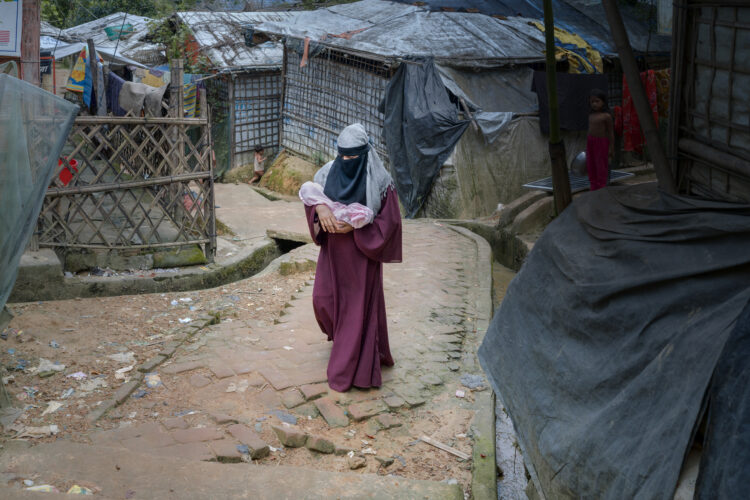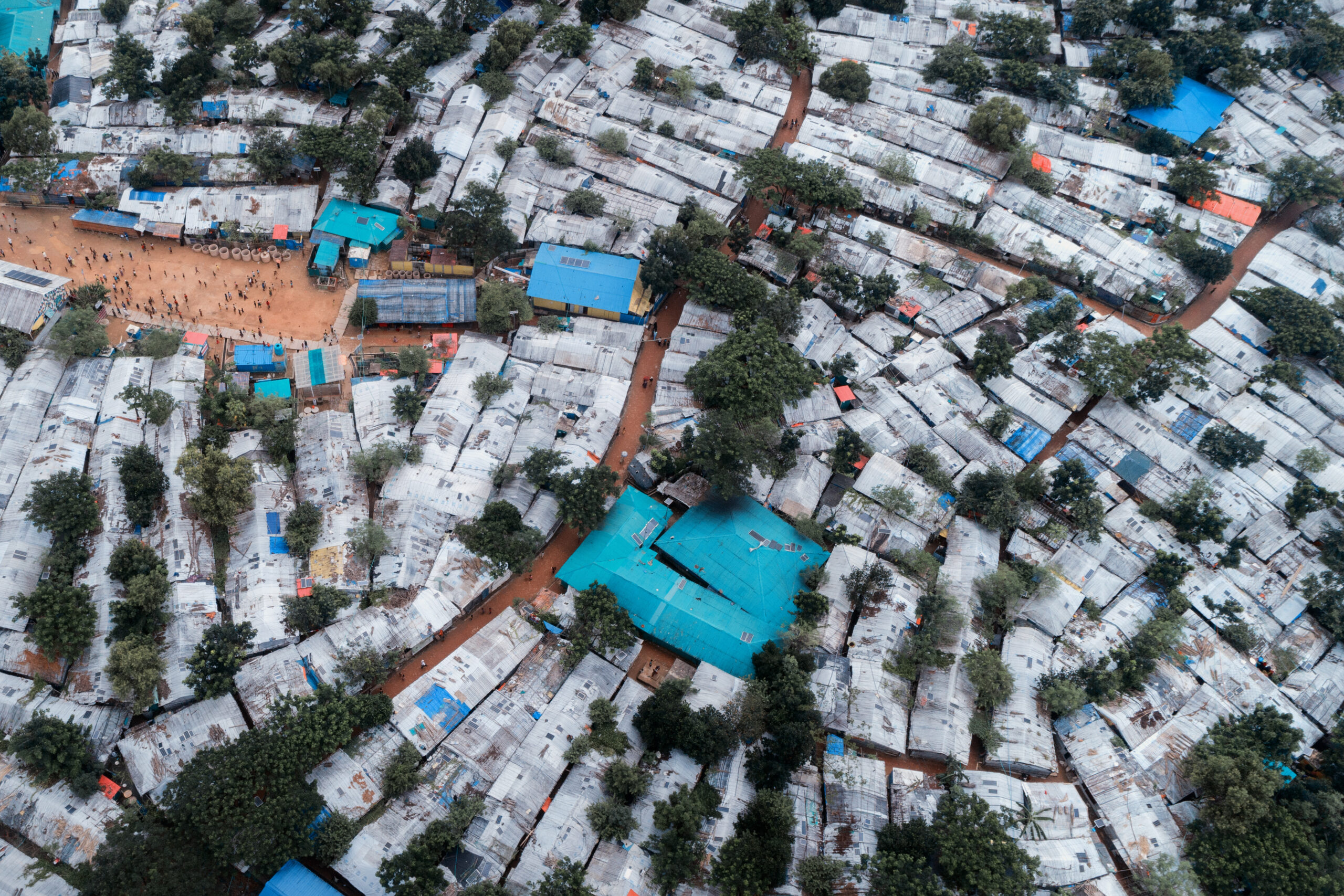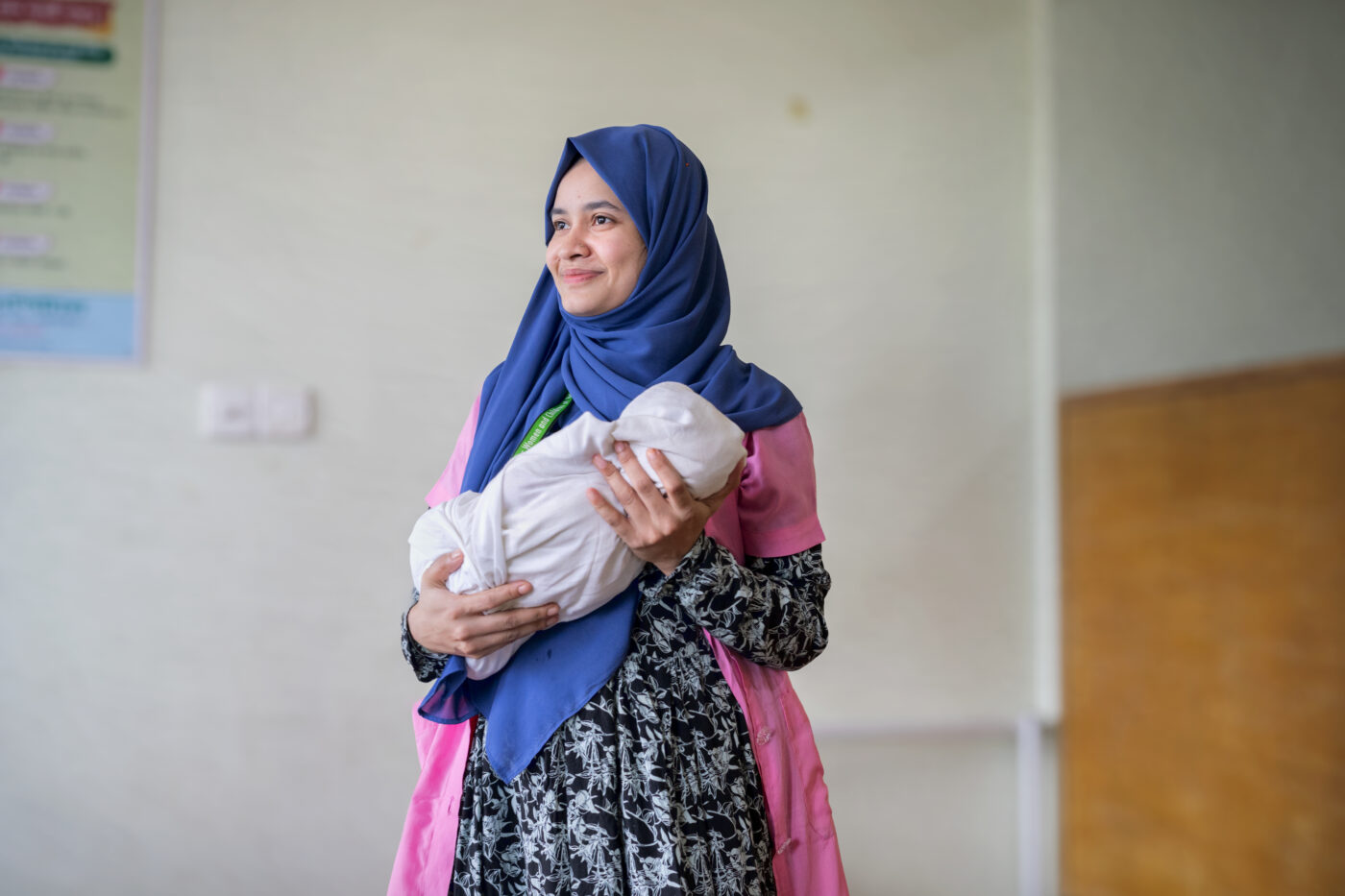Behind the Camera: Fabeha Monir’s Lens on Midwives Working in Humanitarian Settings

“Behind the Camera” is an ongoing series that celebrates the talented photographers behind ICM’s midwifery photo library. With over 1,600 images capturing midwives in action across the globe, this collection showcases the diverse roles midwives play in improving health outcomes and transforming communities. From midwives working in remote Indigenous communities in Australia to those supporting refugees in Cox’s Bazar, Bangladesh, and student midwives starting their journeys in Pakistan, the collection brings to life the dedication and resilience of midwives worldwide.
This series shines a spotlight on the creative minds behind these images, delving into their perspectives and the stories they capture through their lenses. In this feature, we turn our attention to Fabeha Monir, a remarkable photographer whose work has brought us closer to the lives of midwives in Bangladesh, including her recent work documenting midwives serving the Rohingya community in Cox’s Bazar. Fabeha’s talent for visual storytelling, combined with her deep respect for the individuals and communities she photographs, has made her a vital contributor to ICM’s photo and video library.
What initially drew you into photography, and what themes or subjects do you feel most passionate about in your work?
I use photography, writing, and videography to focus on humanitarian narratives, exploring themes such as social development, migration, gender violence, and the struggles of displaced communities. My work is driven by a deep commitment to capturing the profound realities of the lives I document. Photography gives me an extraordinary level of access to people’s lives, and their openness brings a tremendous sense of responsibility—not only to depict the truth but to honour their stories with respect and authenticity.
As a storyteller, the challenge lies in creating work that is both impactful and compassionate, drawing the viewer in to learn more and engage with the issues at hand. I aim to transform visuals into emotions, evoking the universal experiences of joy, sorrow, grief, and resilience that connect us all. Humanity is deeply interconnected; when one of us suffers, it affects others in ways we may not immediately realise. This cycle of suffering will only continue unless we take action to change it, and I hope my work inspires that change.
Before participating in this project, what was your understanding of midwifery, and how did you become interested in documenting the work of midwives through photography?
In 2018, I worked closely with midwives for the first time. At the time, over 5,000 mothers died in childbirth each year in Bangladesh. Midwives play a critical role in saving lives, yet they often face prejudices from doctors and families. In this way, they have become pioneers of emancipation. During that period, I documented their work for a German publication, Stern Magazine, in a project titled How Midwives Stand Up for Children and Women. It was through this experience that I began to understand the complexities of being a midwife in Bangladesh, where the profession was still relatively new in a densely populated country.
Nearly half of all women in Bangladesh give birth at home, often with unqualified helpers, and many live in remote areas cut off from healthcare services by impassable roads. Cultural and financial barriers add to the challenges—husbands may forbid women from seeking care, and Caesarean sections in private hospitals, which are sometimes unnecessary, can cost ten times more than natural births. In some facilities, maternity wards have operating rooms but no delivery rooms. Even today, many people still do not fully understand what midwives do.
Short after that first proyect, I documented midwives during the Rohingya refugee exodus in Bangladesh, focusing on the life-saving services provided by the Hope Midwifery Institute and Hope Field Hospital in Cox’s Bazar. Midwifery students and professionals were delivering critical care to women and newborns in the camps during a time of immense need. Since then, I have continued to document midwifery services, following many midwives’ profiles for educational, nonprofit, and editorial projects, hoping to make their role more visible and to increase public understanding of the work they do.
Can you describe the context in which your photos were taken and what stood out to you most about the midwives’ work in these settings?

The photos were taken in Cox’s Bazar, specifically within the Rohingya refugee camps and at Hope Field Hospital, which provides essential healthcare services to the displaced community. The midwives I documented are committed to their work despite the immense challenges they face. Many of them operate in underserved communities where pregnant mothers often rely on free healthcare services provided by hospitals and birth centers.
One of the most remarkable aspects of working closely with midwives is their calmness and patience. Their level of commitment and hard work makes them extraordinary, which is why women rely on them, as they receive excellent care from the midwives. The way midwives handle young pregnant mothers, especially in humanitarian settlements, is truly impressive.
Was there a specific moment or interaction during your time in Cox’s Bazar that left a lasting impression on you?
I began working with the Rohingya community in 2017, and it has been a profound journey. The conservative nature of the community, combined with their limited access to healthcare and basic facilities, particularly for women and pregnant mothers, has been striking. I witnessed firsthand the challenges they faced, often giving birth at home without any help.
What left a lasting impression on me was observing how midwives effectively built trust and established strong relationships within the community. They conveyed the importance of accessing healthcare services at the facilities where they provided essential support for pregnant women. It was remarkable to see the midwives engage in open discussions about reproductive health and rights, and maternal hygiene, fostering an environment where women felt comfortable sharing their concerns.
The transformation I witnessed was revolutionary. Women who once faced significant barriers were now confidently addressing their reproductive health issues and seeking advice from midwives. The support they received before and after childbirth marked a significant change in their lives.
This newfound confidence in the midwives was extraordinary to document and discover. While much work remains to be done, I am hopeful and inspired by the progress made. It was truly striking to see how these relationships have empowered women within the community.
What challenges did you face while capturing these images in a humanitarian setting, and how did you navigate them?
Working in humanitarian settings, particularly with displaced communities like the Rohingya, comes with significant challenges. Building trust is a slow process, requiring cultural understanding, sensitivity, and respect for religious beliefs. In the conservative Rohingya community, many women prefer not to show their faces, so it was essential to honour their privacy while capturing their stories.
Securing permissions was another hurdle, as consent in this context often involves not just the women but also their husbands and elders. By respecting these cultural dynamics, I gained access to photograph women receiving midwifery services at Hope Field Hospital and within the camps.
The trust midwives had already built with the community was invaluable, creating a collaborative environment that allowed me to approach my work with respect and empathy. While the journey of trust-building is ongoing, it enabled me to meaningfully document the vital midwifery services being provided in this complex setting.
How do you think your photography can influence perceptions of midwifery and sexual and reproductive health in humanitarian contexts? What message or feeling do you hope viewers take away from your photos of midwives?
I believe the images we share on this platform will highlight the dedication and hard work of midwives. Despite the challenges—such as a lack of resources and facilities—midwives provide comprehensive support, leveraging their education and expertise to help those in need. Their services are essential and relate to the fundamental rights of women. This is especially significant in the Rohingya camps and other areas of Bangladesh, where access to quality healthcare is limited. I trust that these images will showcase the unwavering commitment of midwives, ultimately leading to better educational opportunities and enhanced support for their facilities.
Now that you’ve completed this series, how has your perspective on midwifery and its role in humanitarian settings evolved?
It’s essential that organisations and institutions provide adequate training and resources so midwives can receive the best education and training. The midwifery institutes operating in Bangladesh need further support, as midwives are delivering life-saving services, and there are not enough midwives providing care in the community. In humanitarian settings, midwives are indeed providing critical services. Without their intervention, many women in the camps might have no support. In a crisis situation where food is scarce, displaced communities cannot hope for better treatment to be available for free or at low cost. I have seen midwives saving the lives of mothers and children in the most difficult circumstances, and every mother and child deserves this service as a fundamental human right.
Do you have a favorite photo from this series? If so, why does it stand out to you?
The entire series is deeply meaningful to me, but the process behind each photograph is what truly makes them stand out. The courage and transformation captured in these moments give the images their lasting impact.
Two photos in particular hold special significance. In one, midwife Kanata holds a newborn she assisted during birth at Hope Hospital in Cox’s Bazar. Since the Rohingya exodus, Kanata has dedicated herself to serving the refugee community. It took years for the community to recognise the importance of midwifery care, but Kanata’s expertise has earned their trust. Today, she speaks confidently, even when challenging traditions or addressing sensitive topics like reproductive health. Her compassion and determination make her work extraordinary.
The second photo shows a Rohingya woman arriving at Hope Field Hospital. There was a time when women in the community were not allowed to seek healthcare, but now they understand that midwives provide respectful and essential prenatal and postnatal care. This shift in mindset has empowered women to access the services they need, marking a significant transformation in the community.
